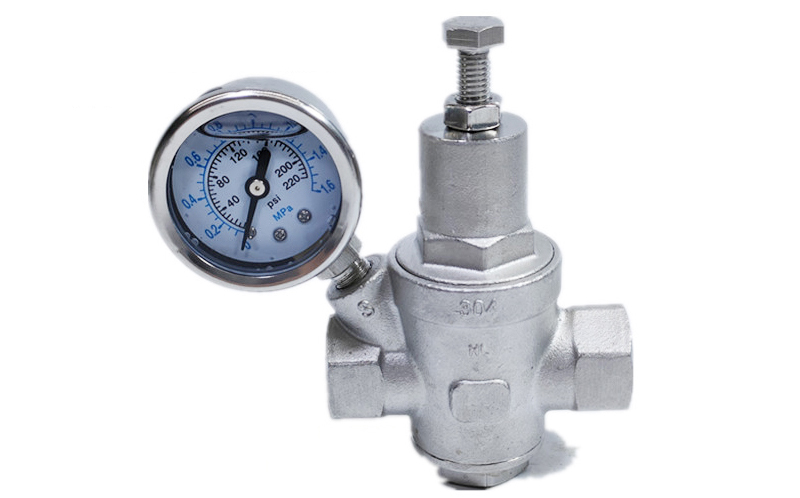Pressure reducing valve is the core equipment for controlling water pressure in industrial and civil systems. This paper analyzes its operation mechanism, provides scientific installation methods, to help you protect system safety and energy saving.
First, the core principle of pressure reducing valve
Pressure regulating mechanism
Through the adjustable throttle hole to change the water flow resistance, the high pressure water source down to the target value.
The spring and diaphragm components monitor the downstream pressure in real time and automatically adjust the opening to maintain stability.
Basics of Fluid Mechanics
Energy conversion: kinetic energy is converted into pressure energy when high-speed water flows through the throttle orifice, realizing pressure reduction.
Dynamic balance: the spring force fights against the downstream pressure, maintaining the error of outlet pressure ≤±5%.
Second, the core advantages and applications
Performance indicators Typical scenes Data support
Water conservation efficiency High-rise buildings, municipal water supply 30% reduction in water consumption (EPA certification)
Pressure Stability Industrial piping, HVAC Fluctuation range ≤±5
Equipment protection Precision instruments, water pump system Extend life by more than 50%.
Installation Key Steps
Basic installation requirements
Direction alignment: valve body arrow and water flow direction (reverse installation leads to failure).
Vertical installation: vertical installation on the horizontal pipeline (to avoid spool jamming).
Filtration configuration: 50-100 mesh filter installed upstream (to prevent clogging of impurities).
Auxiliary Component Configurations
Check valve: Hot water system installed between the pressure reducing valve and expansion tank.
Pressure gauge: 1 for each inlet and outlet to monitor the pressure difference in real time.
Safety distance specification
Downstream expansion tank distance ≥4 meters.
Retain 5 times the diameter of the pipe before and after the straight section (to reduce the impact of turbulence).
Common faults and maintenance
Pressure fluctuation
Cause: Spring fatigue or diaphragm aging.
Solution: Replace the spring assembly every 2 years (recommended stainless steel).
Leakage problems
Troubleshooting: Bubble method to test valve seat sealing.
Remedy: Grind valve seat or replace tungsten carbide coated spool.
V. Industry Standards and Certifications
ASME A112.4.1: Performance Standards for Pressure Reducing Devices.
NSF 61: Material Safety Certification for Drinking Water Systems.
ISO 4412: Design specification for industrial pressure regulating systems.
Summary
Properly installed and maintained pressure reducing valves can significantly improve system efficiency and safety. It is recommended that you contact an ASME-accredited team of professionals for sizing and installation to ensure compliance with local codes. Choose NSF certified products for safe drinking water and equipment reliability.
Pressure Reducing Valve Working Principle and Installation Guide

Water safety valves: guarding the safety of water systems